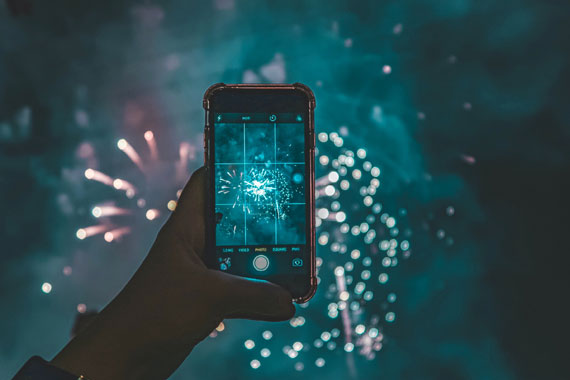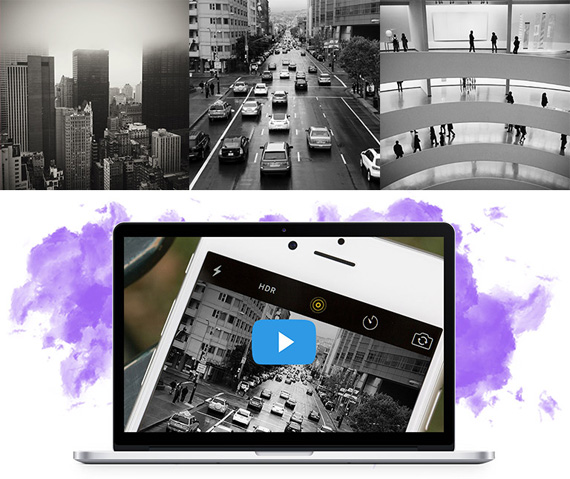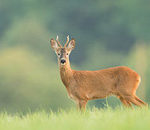In photography, capturing the perfect image often revolves around understanding and manipulating light. But when natural light is limited, especially during night or in dimly lit areas, things become challenging. Modern smartphone cameras, despite their compactness, have made significant strides in addressing this challenge. Let’s delve deeper into the technological nuances behind this.
Relevant reminder: offer ending soon for the iPhone Photo Academy Winter Sale

Photo captured by Jules PT
1. Aperture Explained: The Role of Size
The aperture of a camera lens is essentially its “eye.” A larger aperture (denoted by smaller f-numbers like f/1.8) means the camera lens can open wider, allowing more light to enter. While a larger aperture aids in capturing brighter images in darker conditions, it’s only one piece of the puzzle.
2. Sensor Size and Its Significance
The sensor is where light is captured and converted into an image. Generally, larger sensors can gather more light, leading to better image quality and reduced noise. Although smartphone sensors are smaller compared to those in DSLRs or mirrorless cameras, advances in sensor technology have optimized them for better performance in limited light.
3. Optical Image Stabilization (OIS): A Mechanism for Clarity
In low light, the camera often needs to use slower shutter speeds to let in more light. However, this can introduce motion blur from slight hand movements. OIS combats this by making micro-adjustments to the lens or sensor, providing more stability during longer exposures.
4. Computational Photography: More Than Just a Click
This involves using algorithms to improve or extend the capabilities of digital photography. For example, some smartphones take multiple short-exposure shots and then merge them to produce a brighter and clearer image. This method reduces the noise typically seen in long-exposure shots.
5. AI in Photography: Not Just a Buzzword
While AI might sound like a trendy term, its application in photography is substantial. AI can assist in analyzing a scene, adjusting settings accordingly, or even identifying and enhancing specific subjects in a frame. This leads to better optimization of available light and improved overall image quality.
6. The Value of Manual Control
Auto-modes are great for convenience, but sometimes full control can yield better results. By manually adjusting parameters like ISO (sensitivity to light), shutter speed, and focus, users can tailor the camera’s behavior to better suit challenging lighting situations.
7. RAW Capture: The Post-Processing Powerhouse
A RAW image retains all the data from a sensor without compression or processing. This offers more flexibility when editing, especially useful in low light scenarios where you might want to adjust exposure, shadows, or reduce noise without compromising on quality.
8. Role of Multiple Lenses
While a single lens might be versatile, having multiple lenses (like wide or ultra-wide) allows for more flexibility. Some of these lenses have larger apertures or specific focal lengths, designed to perform better in different lighting conditions.
In Conclusion
Photographing in low light with a smartphone isn’t just about having advanced features or the latest tech. It’s about understanding how these technologies work together, how they can be adjusted, and how to use them effectively. While modern smartphones have made it easier to capture quality images in challenging conditions, knowing the underlying principles will always enhance the outcome.
For Further Training:
iPhone Photo Academy is an in-depth online course that will show you how to take incredible iPhone photos. With the right knowledge an iPhone can be used to take photos that are so good that most people would never even believe that they were taken with a phone. It is currently 84% off until the Winter Sale ends tomorrow!
The best camera is the one that is always with you. But having the iPhone with you is only half of the equation. The other half is knowing how to use it to take outstanding photos.
Deal ending soon: The iPhone Photography Academy Winter Sale
Like This Article?
Don't Miss The Next One!
Join over 100,000 photographers of all experience levels who receive our free photography tips and articles to stay current:







Leave a Reply